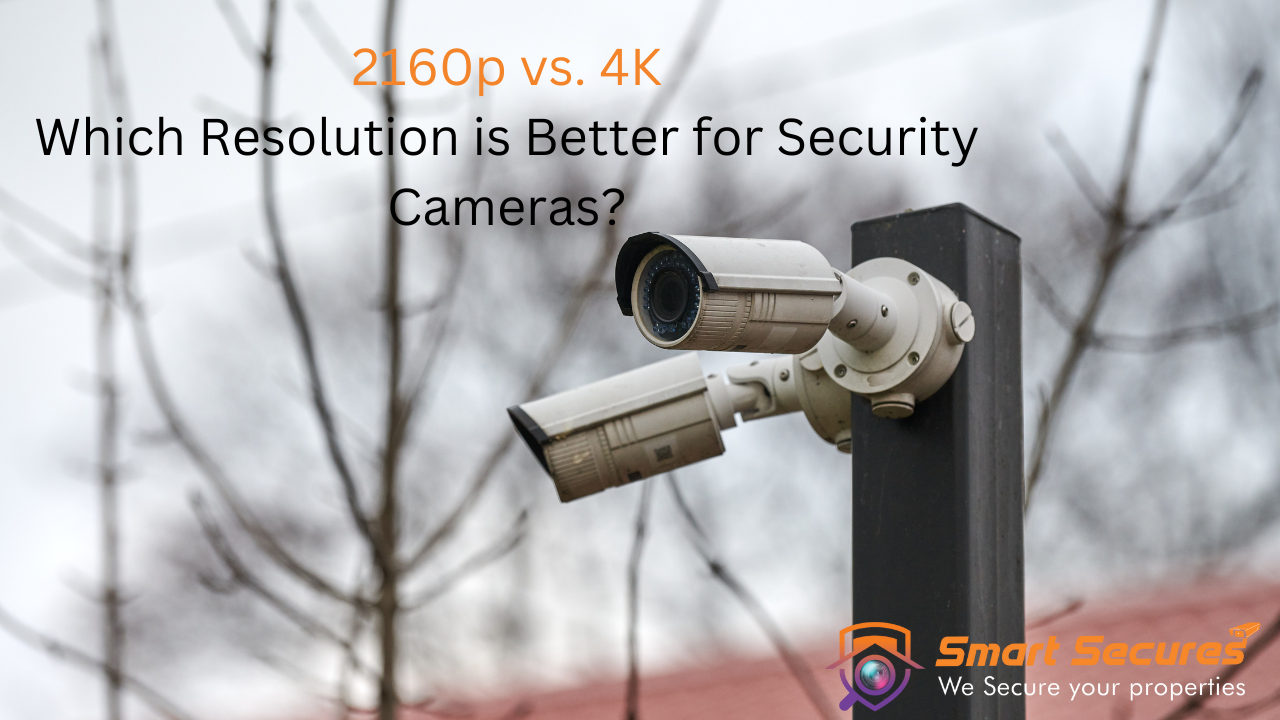Home > Blog > 2160p vs 4K: A Comprehensive Guide to Understanding the Differences
In the world of video quality and surveillance technology, you may have encountered terms like 2160p and 4K.

In the world of video quality and surveillance technology, you may have encountered terms like 2160p and 4K. These terms are often used interchangeably, but are they truly the same thing? Are there differences between the two? If you're looking to enhance your security system or upgrade your entertainment setup, it's essential to understand what these terms mean and how they impact the visual experience.
In this article, we'll dive deep into the differences between 2160p and 4K, explaining what they are, how they differ, and why it matters when selecting video surveillance systems, TVs, or monitors. By the end of this read, you'll have a clear understanding of both resolutions, and you’ll be able to make an informed decision about which one is best for you.
At its core, 2160p is a resolution standard that signifies 3,840 horizontal pixels by 2,160 vertical pixels. This resolution is often referred to as Ultra High Definition (UHD) because it delivers a crisp, clear picture with four times the pixel density of 1080p (Full HD). With 2160p, the image quality becomes noticeably sharper, especially on larger screens.
You might encounter 2160p in various contexts, such as surveillance cameras, TVs, or even streaming services. It's typically used in consumer-grade electronics and represents the next level in picture quality after 1080p. However, it can sometimes be confused with 4K due to its similar pixel count.
What is 4K?
The term "4K" refers to a resolution of approximately 4,000 horizontal pixels, or more specifically, 3840x2160. This is the resolution standard for professional film production and high-end consumer electronics like cinema displays, high-end monitors, and top-tier TVs. In essence, 4K is slightly broader in scope than 2160p, but the difference is quite marginal when comparing these two resolutions.
4K resolution is widely used in professional environments like film production, digital cinema, and gaming, offering a much higher level of detail. When viewing content in 4K, you notice greater depth, more accurate colour reproduction, and sharper details.
The Key Differences Between 2160p and 4K
While both 2160p and 4K are ultra-high-definition formats, the main difference lies in the pixel count. 2160p typically refers to 3840x2160, whereas 4K can vary slightly depending on context. In digital cinema, 4K could refer to resolutions like 4096x2160, which offer more horizontal pixels than 2160p.
While the difference in the number of horizontal pixels might sound substantial, in practice, this distinction is barely noticeable to the average viewer unless viewed on very large screens or from up close.
In surveillance systems, 2160p provides excellent video quality for most home and commercial security setups. It offers high-definition clarity, perfect for identifying faces, vehicles, and license plates. It's often the go-to resolution for many security camera manufacturers due to its balance of quality and cost.
4K resolution cameras take surveillance a step further, providing superior image quality with more fine details. This is especially useful in larger areas where you need to capture clearer, more precise images. 4K surveillance cameras are best for settings where every pixel matters, such as large properties or high-security environments.
One of the main reasons to choose between 2160p and 4K is the visual experience. Let’s break down how these two resolutions stack up against each other.
For smaller screens (under 50 inches), the difference between 2160p and 4K is hardly noticeable. However, as the screen size increases, or when you sit closer to the screen, 4K becomes more evident, with more detail and clarity.
Which One Should You Choose?
When deciding between 2160p and 4K, it comes down to a few key factors:
Both 2160p and 4K deliver outstanding image quality, and which one you choose depends largely on your needs. If you want cutting-edge clarity for large screens or want to future-proof your home entertainment system, 4K is the way to go. However, if you’re on a budget or are setting up a security system, 2160p offers excellent value without compromising too much on visual quality.
Ultimately, both resolutions provide an incredible viewing experience, so it’s about finding the balance between cost, performance, and purpose that works best for you.
While 2160p and 4K are often used interchangeably, the primary difference is that 4K typically refers to a horizontal resolution of around 4000 pixels, which is slightly wider than 2160p.
Yes, 2160p is perfectly suitable for large-screen TVs, although for even larger screens or closer viewing, 4K may be a better option.
Yes, 4K cameras provide more detail and clarity, which can be crucial in high-security environments where identifying small details matters.
For everyday use, 2160p provides a great balance of quality and affordability. 4K is more beneficial for users with larger screens or those looking for the ultimate picture quality.
Yes, 4K TVs are generally more expensive than 2160p TVs, but the price difference is narrowing as 4K becomes the standard.

5,852 reviews